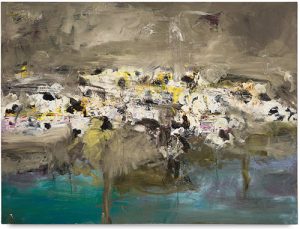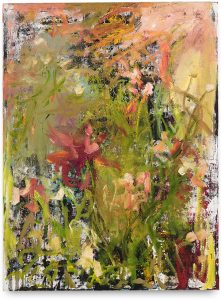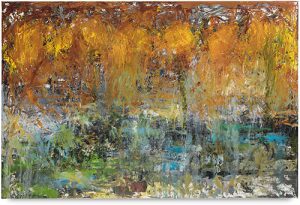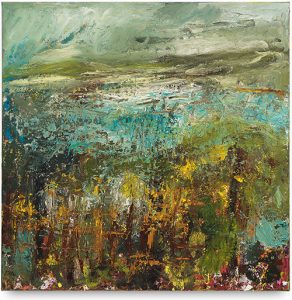Since moving to London in 2018, how has your art been received back in your home country, Romania?
Hello! Since I moved to London, I haven’t experienced a radical change in how my work is received. Somehow, several new clients from Romania have noticed my activity and have recently gotten in touch with me. It seems that my work has sparked interest in a type of clientele that is passionate about collecting art and in supporting artists.

Photo credit: Tom Carter
This has not been a monumental change, but it has still impacted me and my practice over the past 2 years, and I am grateful for the attention my work has received. Regarding collaborations with galleries in Romania, I can say that I’ve received proposals for cultural events in my hometown Sibiu (The City of Artists), in Transylvania, where I was also recently invited as a special guest. Galleries in the UK, Tokyo, and France have shown increasing interest, and I’m having ongoing discussions with them about future projects.
I have been very fortunate to receive an accolade from the Romanian president, Mr. Klaus Iohannis, who has followed my work for several years. This past November, I was knighted for my dedication and professionalism that led to the enrichment and promotion of Romanian culture abroad.

Photo credit: Tom Carter
How would you say London’s cultural and artistic environment has influenced you as an artist and your work?
I can say that London has actively enhanced my creativity and development over the last two years. There are many cultural events that I participate in, but what is most different is how diverse and effervescent London’s art crowd is. So many people here get involved in the artistic process. I am mainly a self-taught artist, and I feed on information and creativity from my surroundings. That being said, one of the clearest changes in my work is the return to subjects of natural origin, to the colors that painted my childhood years. London’s green color is similar to the blue of Voroneț, unique colors that manage to inspire me in creating works that transcend my imagination.
Do you believe that the public reserves different or lesser respect towards contemporary art?
I think that art is very diverse and that there is an audience for all kinds of creativity. I don’t think there is the same focus on one artistic direction like there was 60-70 years ago. There are certain trends that enthusiasts will constantly follow, but the vast majority of people will consume what art they find attractive and desirable at any given time. Contemporary art is a constant study of understanding and shifting perceptions. The works are broader and have very well disguised or cryptic messages which force the public to discover and understand their meaning. I consider my art to be a combination of classical subjects that is interpreted in modern and contemporary forms.

Photo credit: Tom Carter
Is it fundamental that your audience sees what you want them to see in your works? How important is interpretation to you? Or misinterpretation even?
A lot of my paintings are on large canvases with a lot of color and texture. I have noticed a major shift in perception wherever I exhibit my art. When you encounter a work over 2 meters long and 1 meter high, presented in a chosen light, on a white wall, you will perceive the work differently in this context than in a digital 2-dimensional context, for example. Many of my clients find themselves encapsulated by my work’s emotional and creative process, but this happens primarily when they are in direct contact with my paintings. I think it is very important for people to observe an artist’s work in the way the artist wants it to be presented. However, people who do not understand my paintings often find themselves triggered by the lack of figurative forms. Even if they do not find my paintings attractive, they attempt to understand that my work is different from figurative painting. When they face the paintings, they understand the emotional and aesthetic depth that I have invested in each work, and they are able to take something from them.

Photo credit: Tom Carter
If you were to stop painting tomorrow, what would your last painting look like?
If I stop painting, I stop existing. It’s very hard for me to imagine myself doing something else; in fact, I don’t want to do something else as long as I live.
If you could describe your work with one sentence, what would it be?
My art is a combination of bold perseverance and continuous work, a colorful expression of my soul.
For more information, please visit bogdanmihairadu.com.





